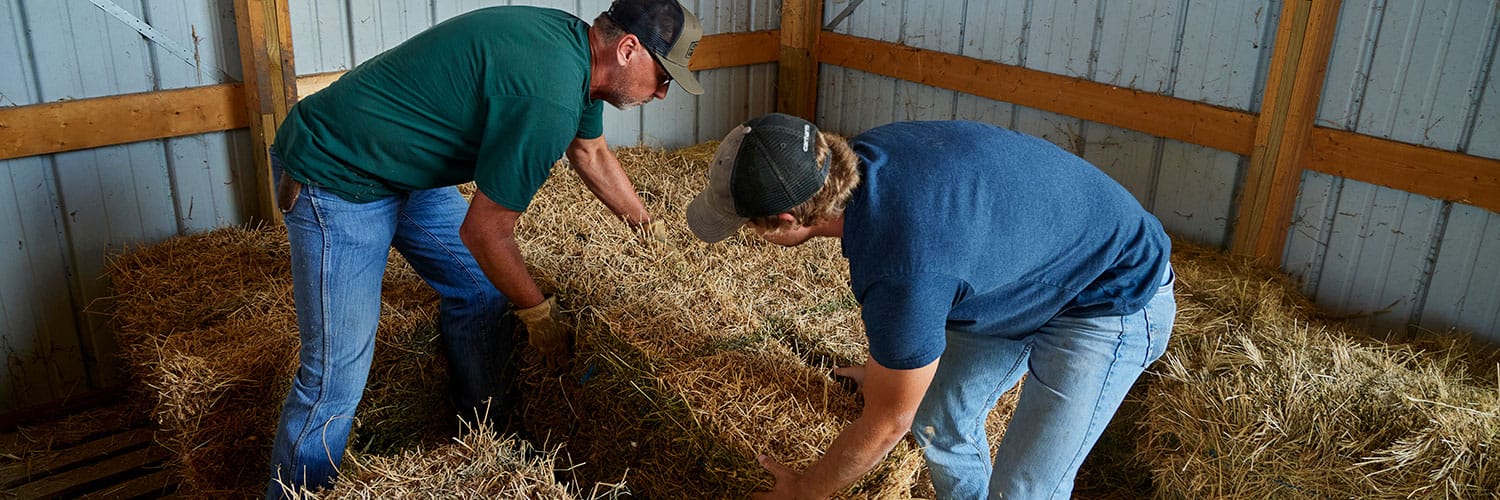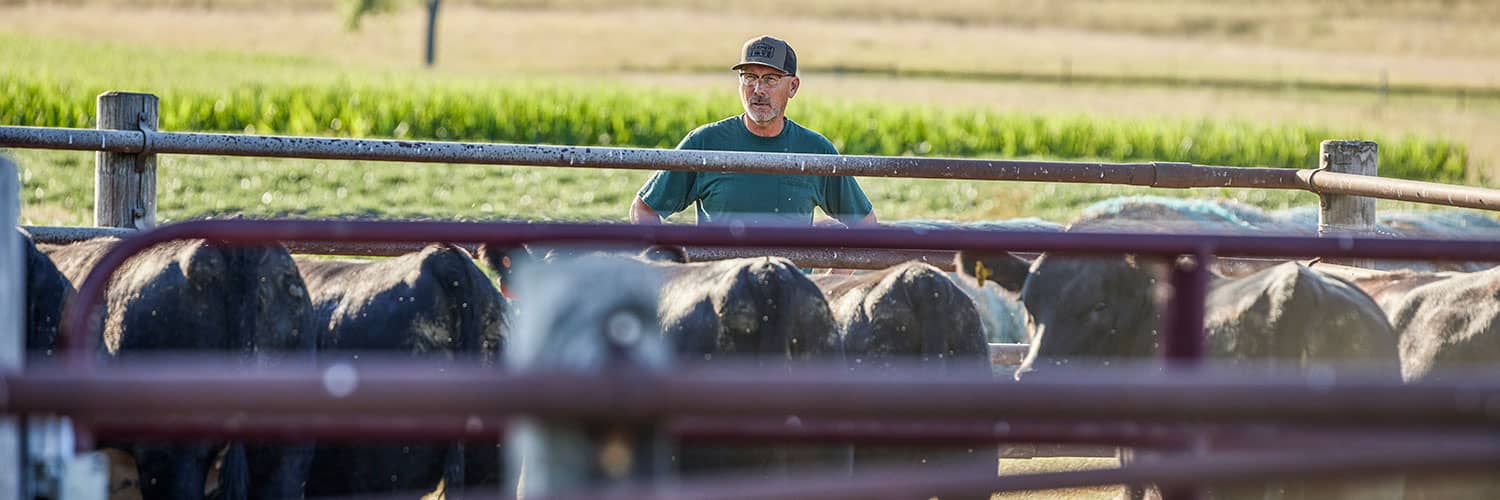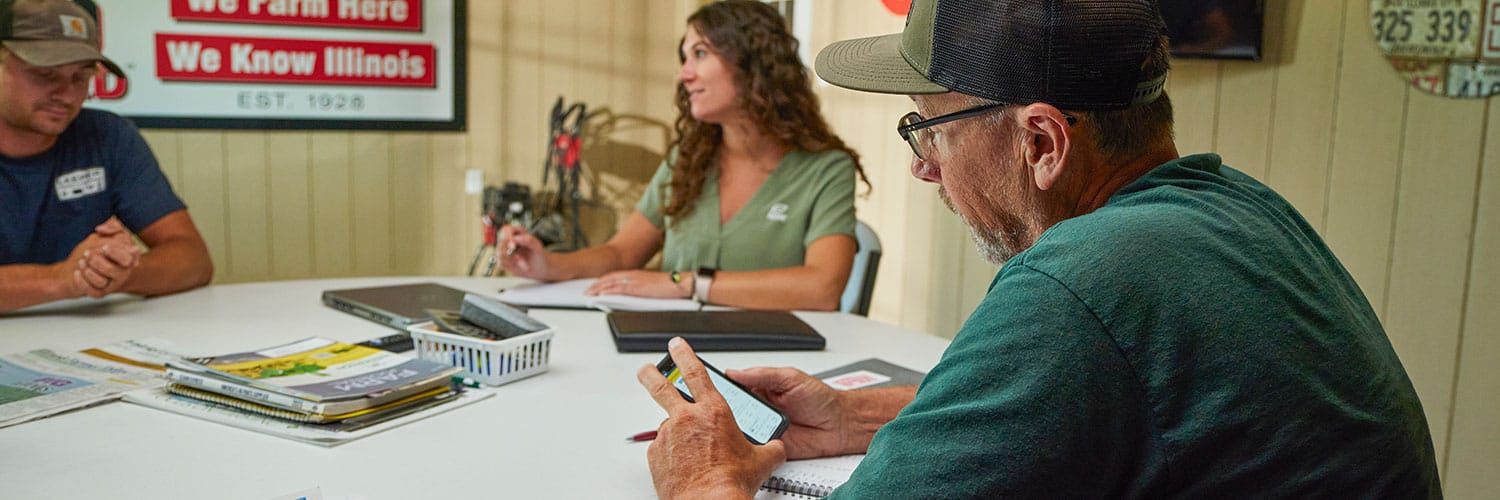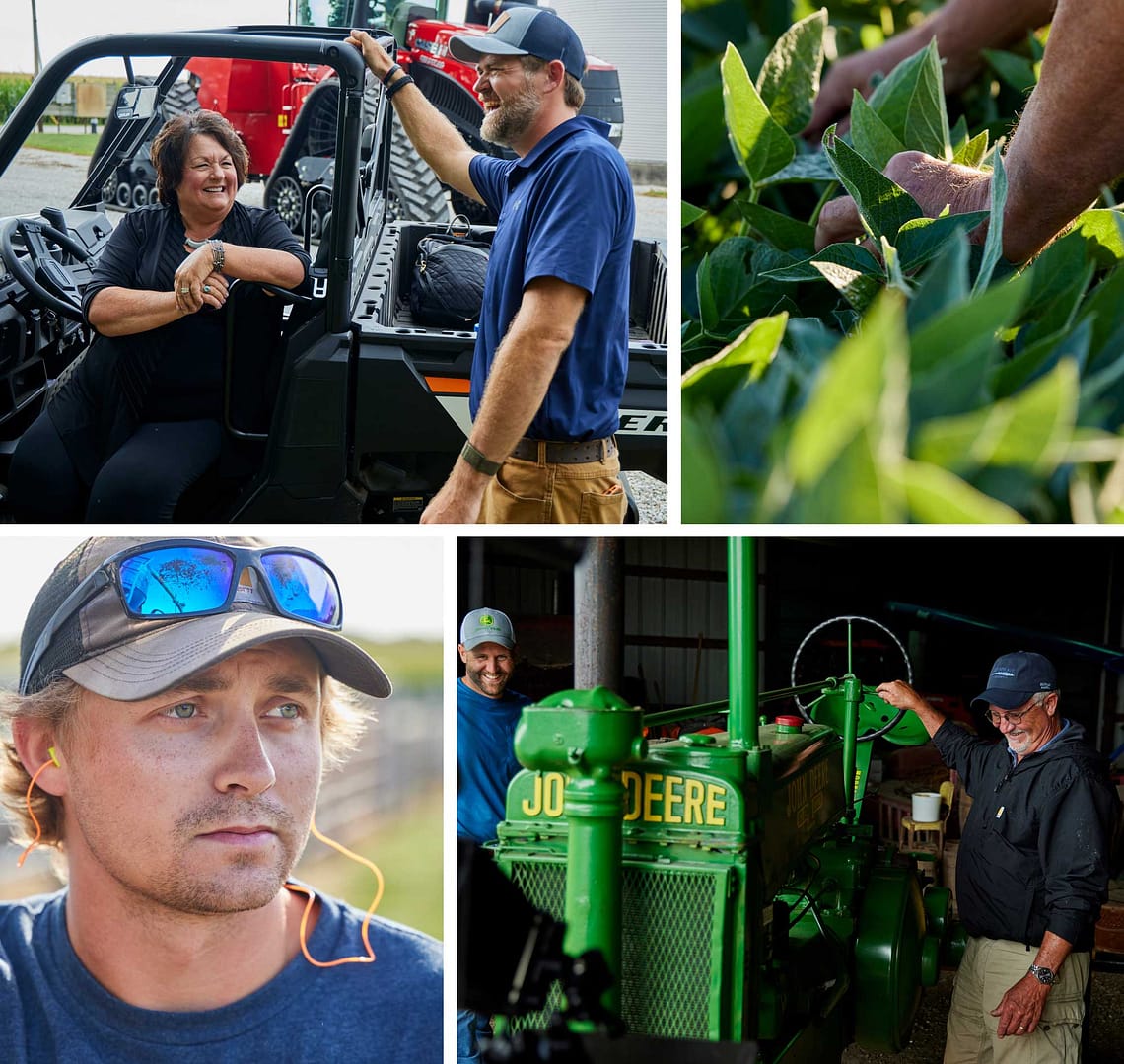Faces of Food: Entrepreneurial Spirit
To support multiple families, farming operations often need to diversify their income stream with different lines of business. One farm in central Illinois is a standout example of this business strategy, and they share their thoughts on the range of benefits it brings their family.
Three Families. One Farm. Many Opportunities.
When Evan Leeper learned of a need for wheat straw bales near his family’s farm outside of Decatur, Illinois, he took it as an opportunity to try something new.
He discussed the opportunity with his father, Tom, and brother-in-law, Nate. They also collaborated with ADM account manager Charlotte Wagner to find a market for the grain. Then, together, they made the decision to commit a small portion of their acreage to growing winter wheat for harvest in 2023 to supply the demand for bales.
Leeper Family Farms takes an opportunistic and entrepreneurial approach when it comes to their operation, and they credit this line of thinking with sustaining their farm for nearly 150 years.

Diversity to manage risk
Tom Leeper says corn and soybeans are the main revenue driver for the farm, but they tap into multiple revenue streams to support three families. They also look for opportunities that play to individual family member strengths and interests to bolster the chance for success.
Here are some of the family’s current ventures:
- They’ve sold corn and soybean seed for years, supported by Tom’s agronomy training. Along the highway near their main office, they plant trial plots that are signed and kept in pristine condition.
- The Leepers raise 50+ head of beef cattle that are sold as freezer beef to local consumers. Tom leads the way on this effort, supported by his daughter, Jenna, and daughter-in-law, Tori, who are both interested in the animal side of the operation.
- They grow and harvest hay, which is sold to nearby stables and ranchettes.
- They groom and maintain pastureland for their beef cattle. Conservation Reserve Program acres sit adjacent to the pastures. This land features native prairie grasses and forbs, supporting wildlife in the area.
- They plant and maintain pollinator plots, which further support wildlife and a healthy natural balance for the environment.

While Tom Leeper considers it a strength to generate income from a variety of sources, he still is cautious about what they take on. “When you have different ventures going on, you have a lot of things to keep track of. You want to make sure you do your job well, otherwise there’s no need in doing it if you’re not doing it well.”
Going forward, Evan Leeper hopes to add land to the operation, reasoning that they have the equipment profile to pick up acres. He’d also like to grow the livestock business. “Nate and both our wives really enjoy working with cattle, so I definitely think that’s one area that we could expand someday.”

Managing grain market volatility
Evan Leeper says the family prefers to market grain with a “soft percentage target” to sell a certain number of bushels before harvest to pay bills and provide a constant income stream for the operation. But sometimes fast-moving markets can put this strategy at risk if no action is taken.

“It’s been really difficult these past couple of years marketing grain because the market made such drastic changes,” he explains. “We’re fortunate to have people like Charlotte at ADM contact us when we’ve hit a marketing goal so we can sell some grain.”
Charlotte Wagner says she meets with the Leepers frequently, because they like to keep a close eye on the marketing side of things. “They like to analyze what’s going on regularly. They’re not the type to set it and forget it, for lack of better words, when it comes to marketing. They adjust their marketing plans and ebb and flow with the market and be flexible.”

Tom Leeper concludes that frequent, open conversations with family members and business partners like ADM lead to successful outcomes in a multi-family operation. “I have to be willing to listen to what they have to say so that it’s not just Dad sitting here saying, ‘We’re going to do this. We’re going to do that.’ We need to hear what the young people are saying, because we need the young people to be coming back into farming. And I’m fortunate to have that.”

More American Farm Stories
The men and women who operate farms across this great country have great stories to tell. Of hard work. Challenging conditions. Overcoming obstacles. Family members working together. Over many generations. And hopeful for the future. Take the time to hear their voices.
